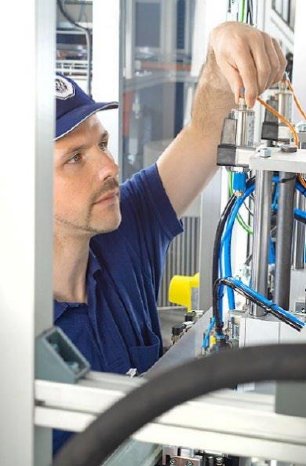The “Regulation of the European Parlament and of the Council on Machinery Products” contains binding provisions for manufacturers and other economic operators governing machinery safety in the European Union. It increases legal certainty by defining binding requirements imposed on the design, construction and placing into operation of machinery and related products. “By adopting the Machinery Regulation, the European Union has updated its regulatory provisions in line with the current state of the art”, says Pascal Staub-Lang, Head of the Centre of Competence Machine Safety of TÜV SÜD Industrie Service GmbH. “This involved expanding the scope of the contents in comparison to the current Machinery Directive still in effect and introducing more concrete provisions in some areas.”
The march of digitalisation and connectivity has also resulted in the emergence of new safety and security risks that were only considered insufficiently, if at all, in the currently valid Machinery Directive. “This is precisely the area involving the most important changes in the Machinery Regulation”, points out Staub-Lang. Requirements in the new Regulation address areas including cybersecurity of safety control systems and of software related to the conformity assessment of the machinery; use of artificial intelligence (AI) in safety functions; autonomous and remote-controlled mobile machinery; and collaborative robots (“cobots”). In addition, the Machinery Regulation will introduce the concept of “substantial modifications”. However, the TÜV SÜD expert warns that in his view, this aspect requires further elucidation: “We will need to clarify how the Regulation is to be interpreted in detail with respect to concrete applications.”
A further major change included in the Machinery Regulation is the mandatory Notified Body conformity assessment, which applies to at least six product categories. “In concrete terms, this involves the machinery types and related products listed in the Regulation Annex I associated with particularly high risk”, explains Matthieu Stein, Senior Product Specialist for Machinery at Technical Competence Centre of TÜV SÜD Product Service GmbH. Machines in this category range from vehicle servicing lifts to safety components with fully or partially self-evolving behaviour using machine learning. Conformity assessment for these “high-risk” machinery products includes the involvement of a Notified Body. The relevant products are listed in Annex of the Machinery Regulation.
Mandatory provisions for all market participants
The scope of the new Machinery Regulation has also been expanded in comparison to its predecessor; the new Regulation spans the entire supply chain and specifies concrete obligations for all market participants. For example, distributors of new and used machinery will also need to address the topic in more depth in future. However, the Machinery Regulation will ease conditions in other areas; for example, the possibility of digital assembly and operating instructions and the EU Conformity Assessment will significantly reduce administration work and costs for machinery manufacturers.
Although the exact date of publication of the new Regulation on Machinery has not yet been announced, publication is expected in July 2023 – the EU Council adopted the new regulation on machinery on 22 May 2023. The regulation enters into force 20 days after its announcement in the Official Journal of the European Union. A 42-month transitional period begins upon the official entry into force of the Regulation; upon expiry of the transitional period, application of the Regulation will become mandatory. “In our experience, the lengthy transitional period means that the majority of manufacturers will be slow to begin addressing the new requirements for future placing their machinery and machinery products on the market and into operation”, says Stein. “However, as implementation is likely to be a time-consuming process, companies affected by the new Regulation are strongly advised to waste no time and start in tackling the new Regulation now.”
More information about the new EU Machinery Regulation can be obtained from TÜV SÜD by sending an email to: maschinensicherheit@tuvsud.com.


